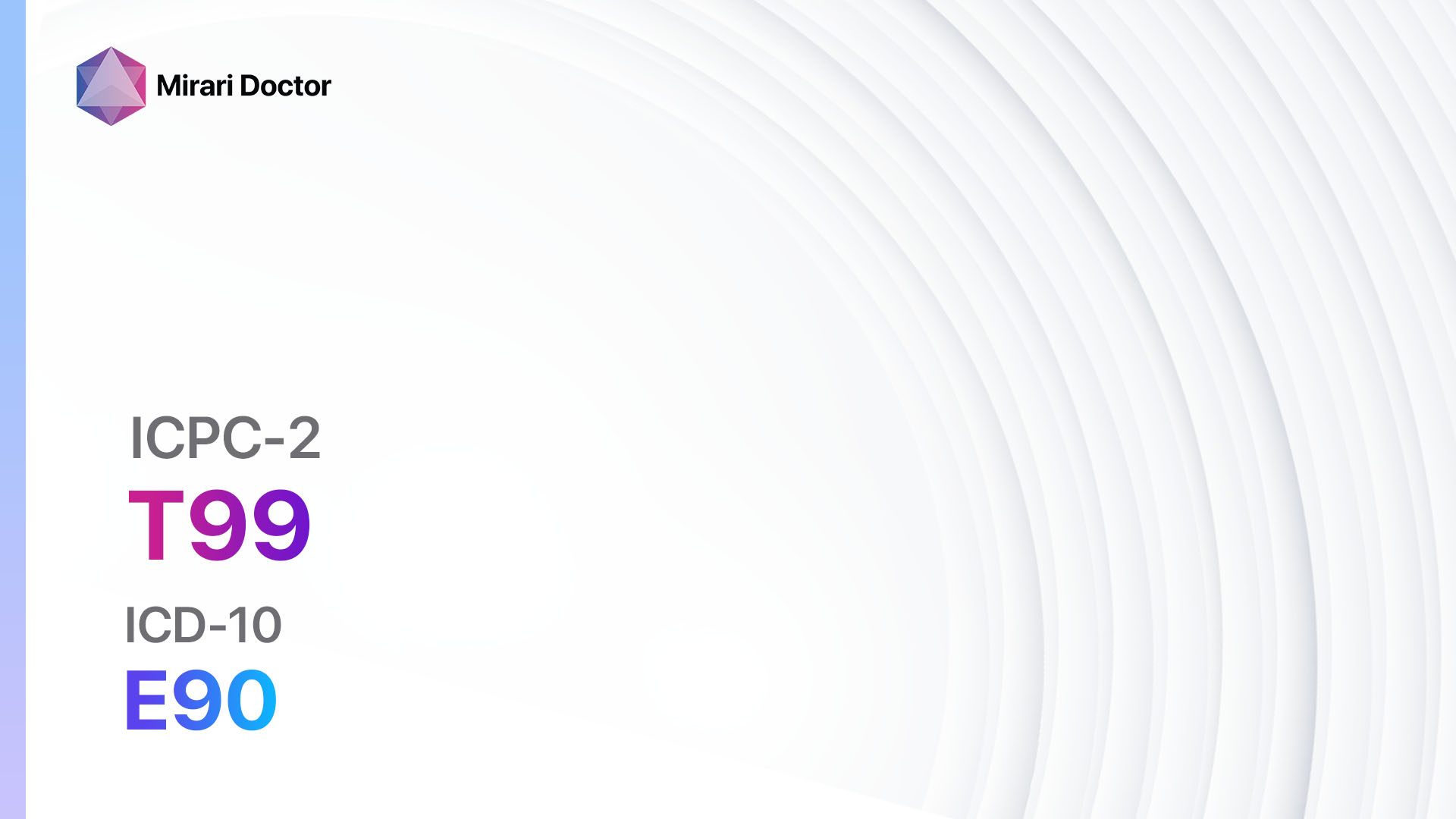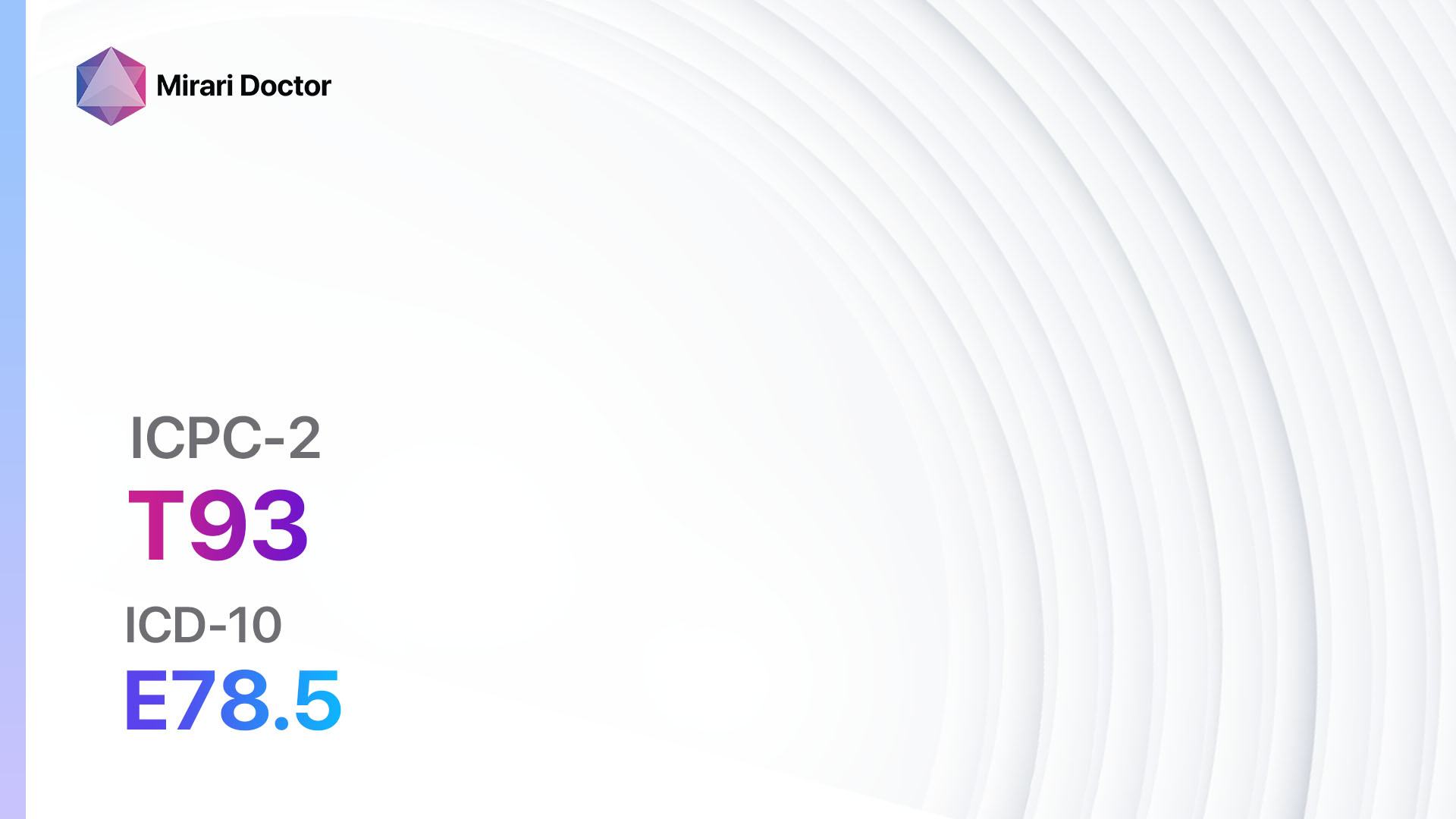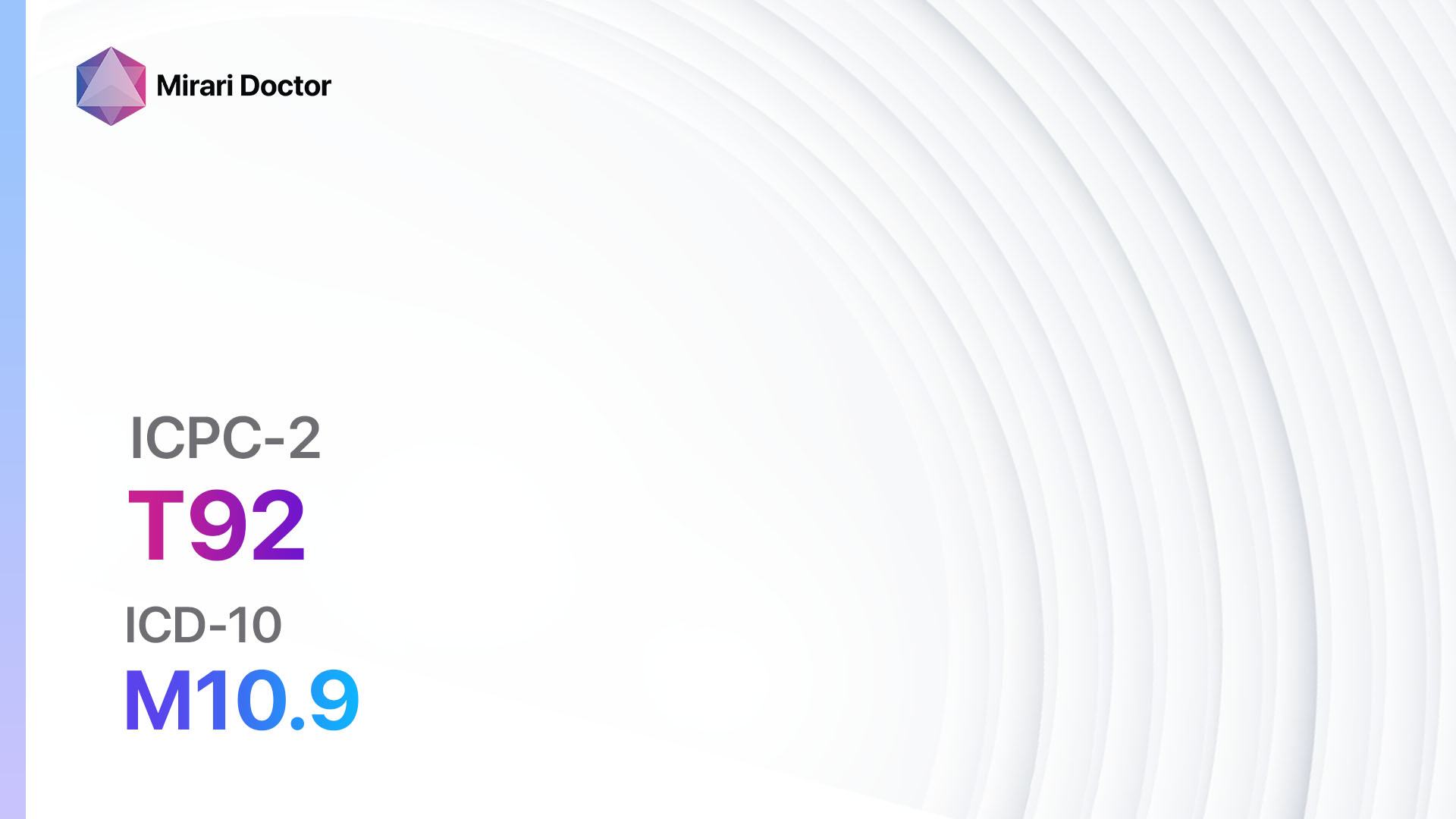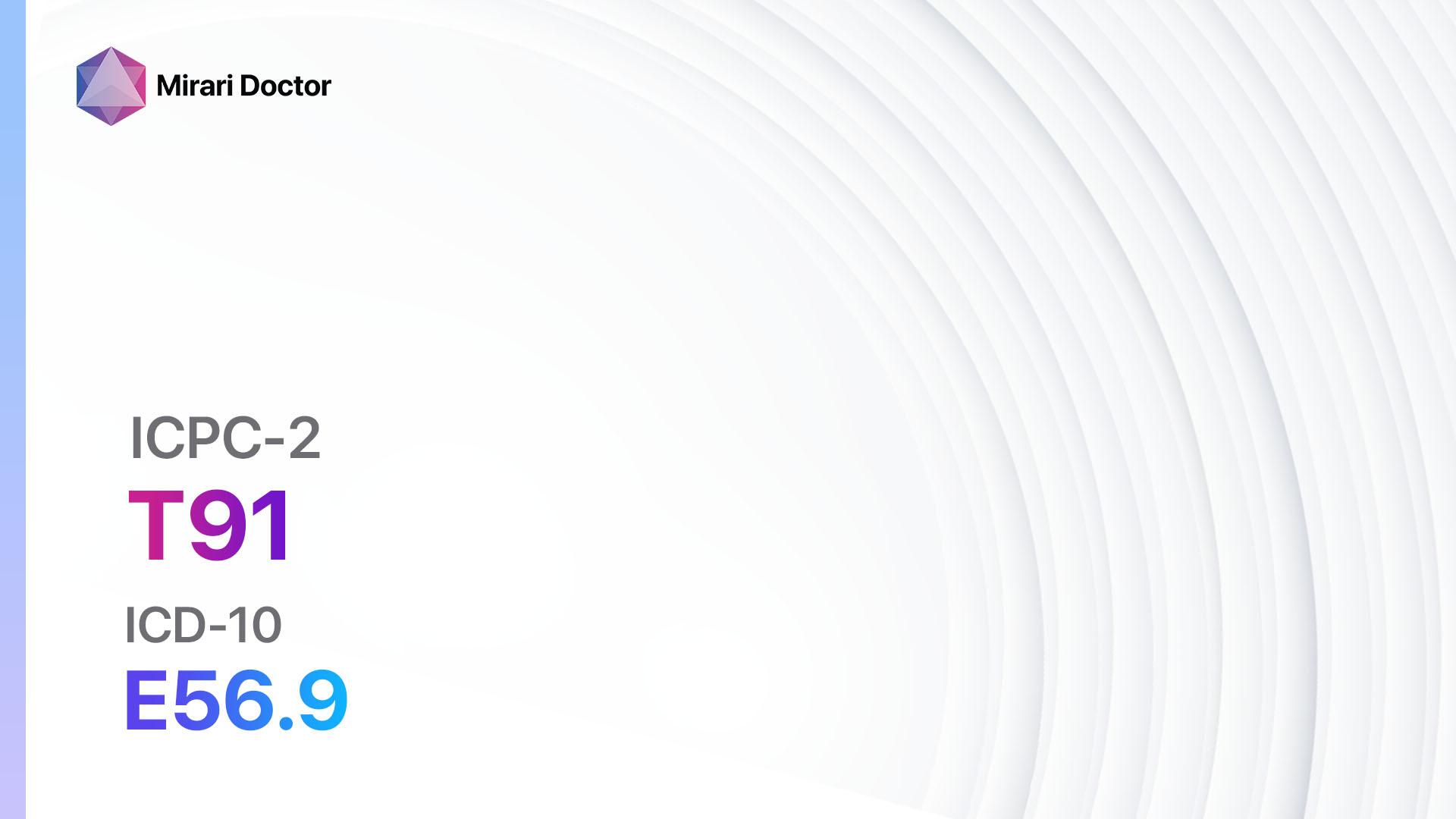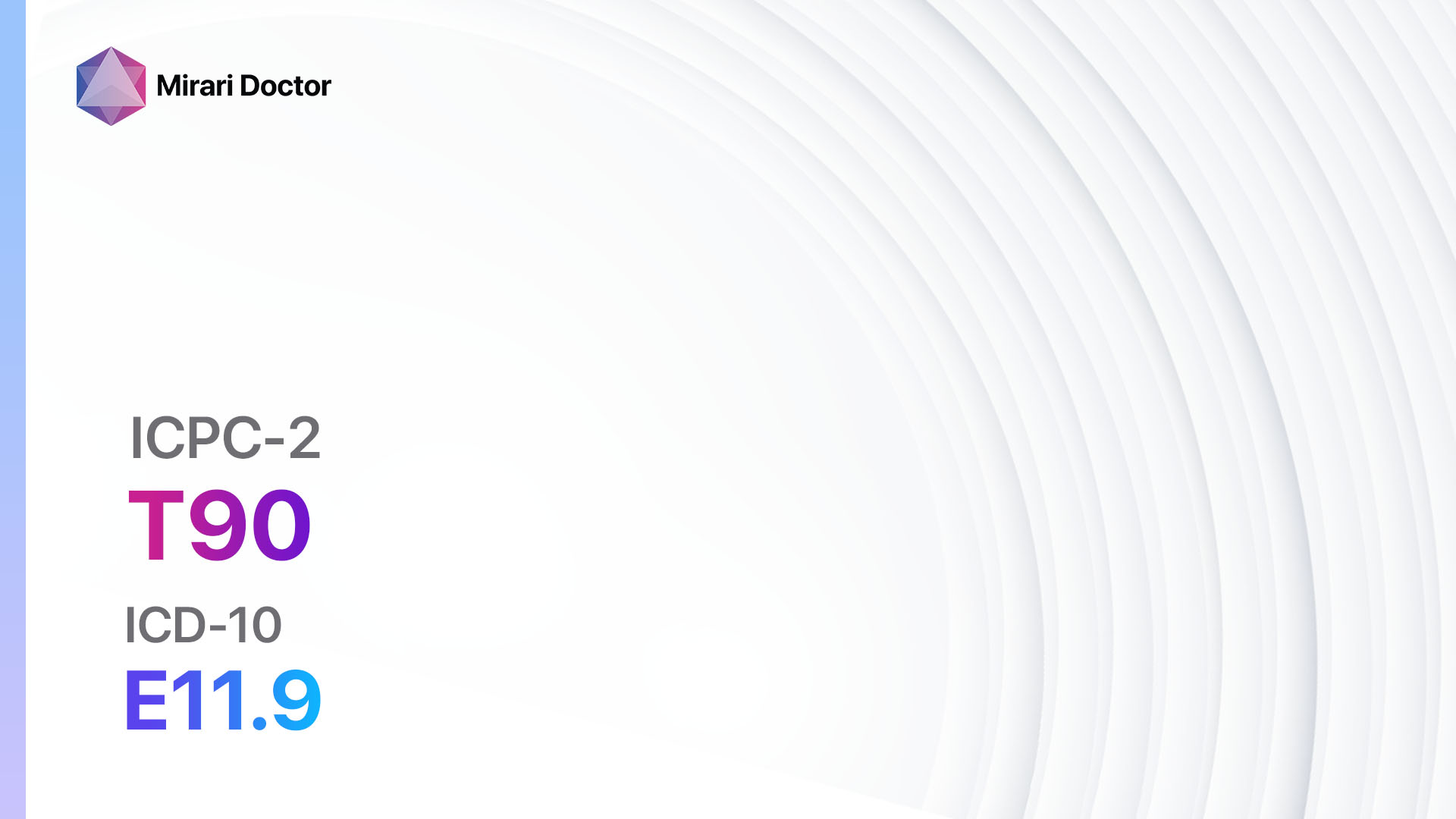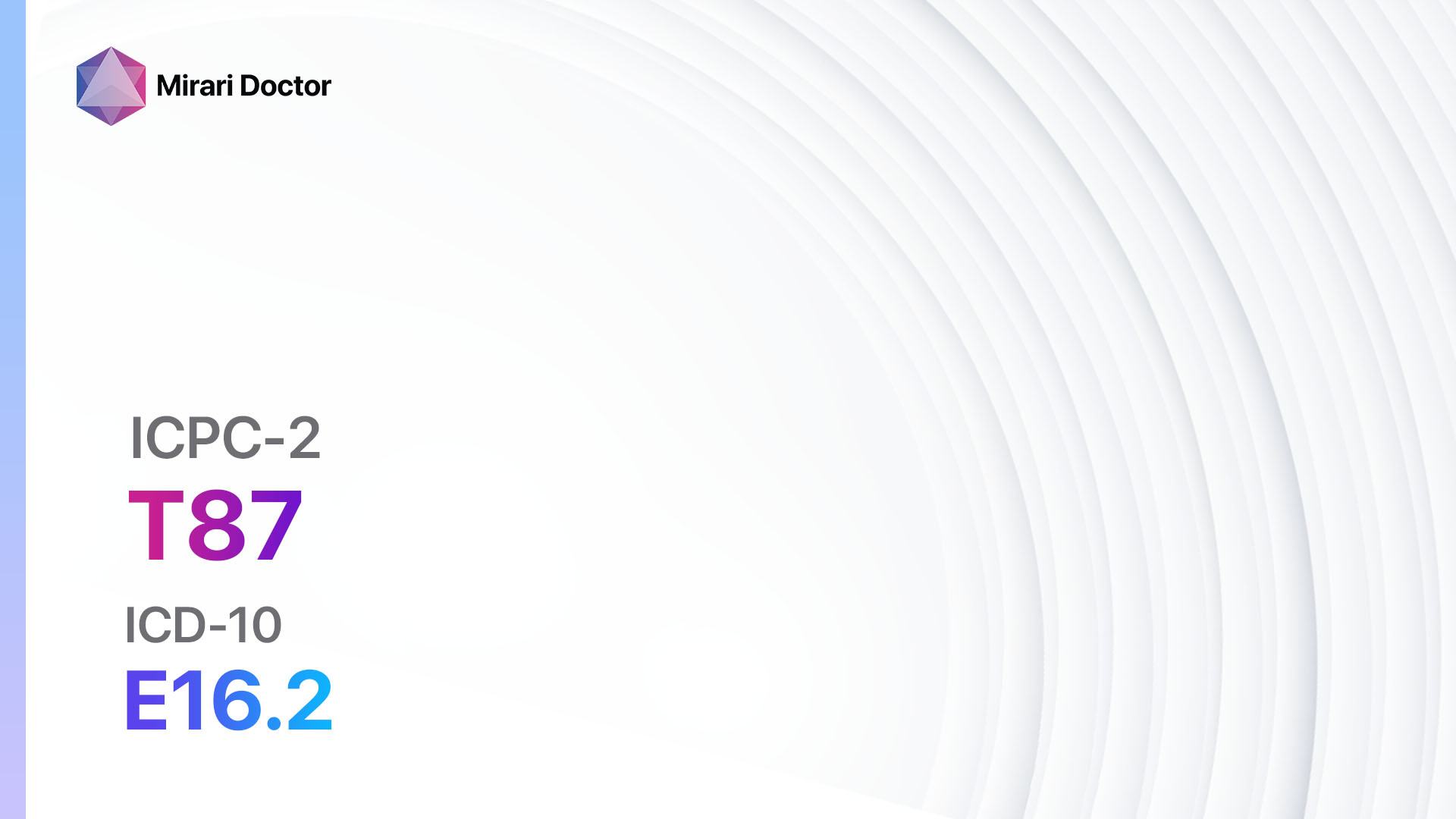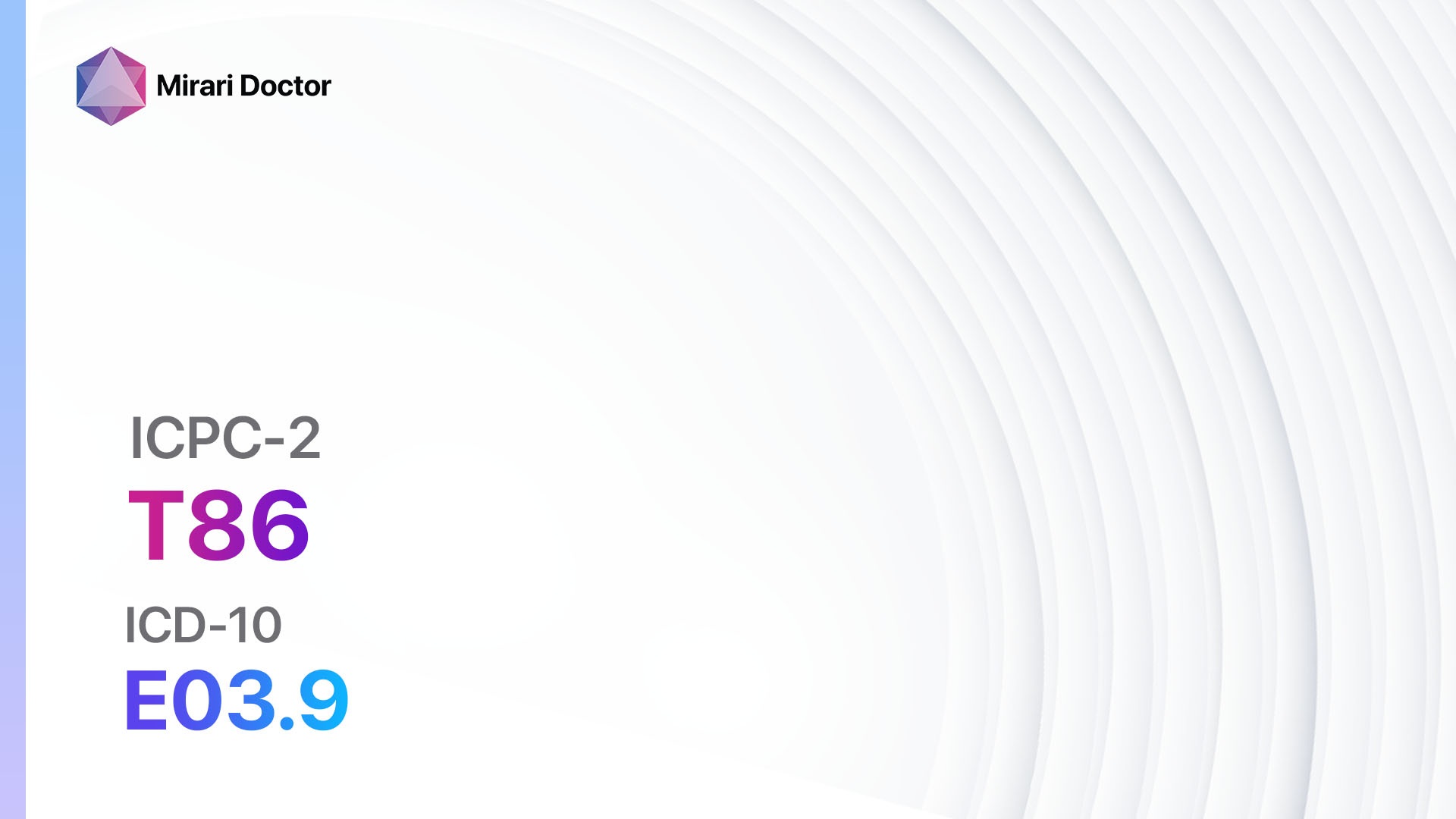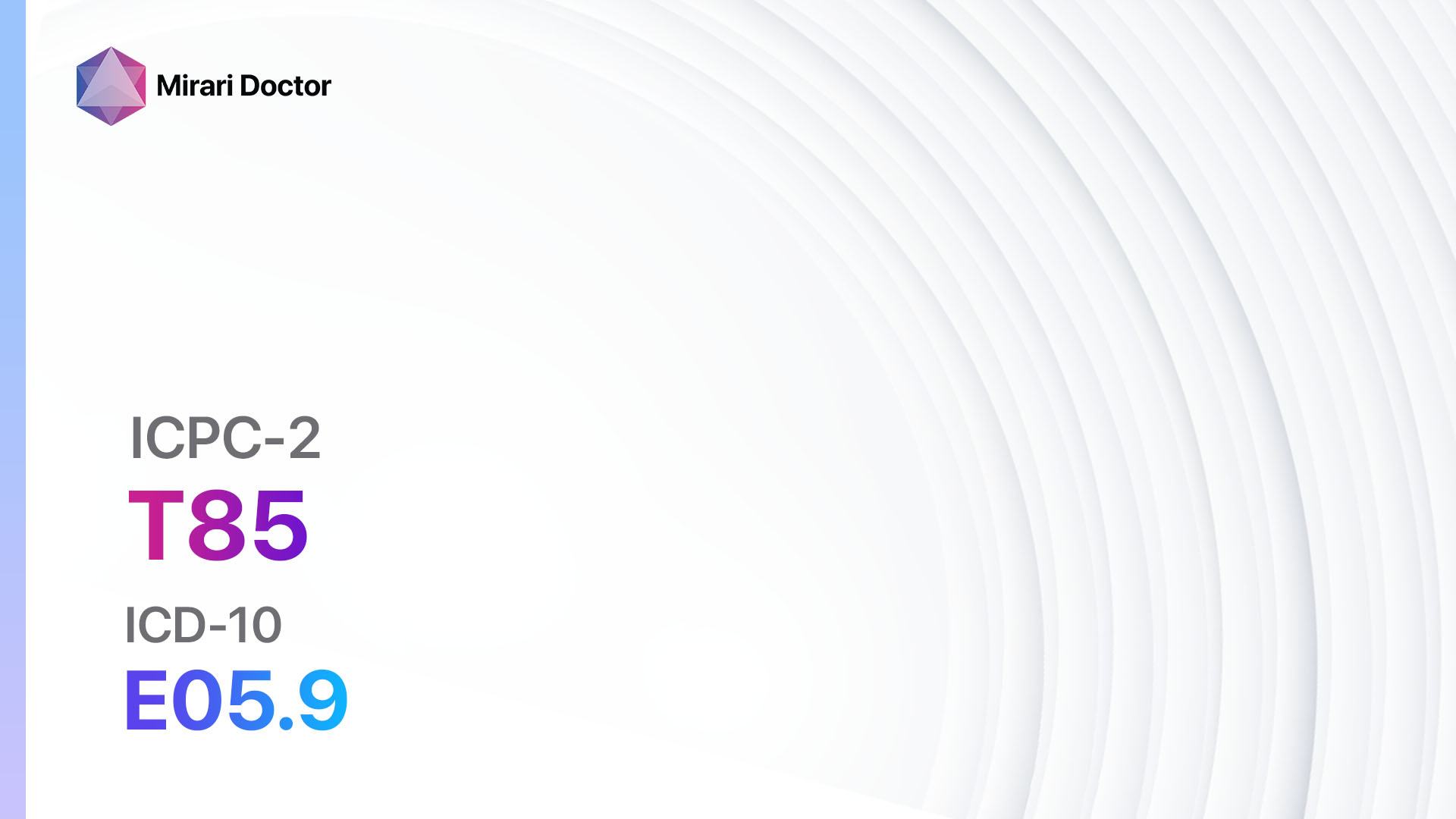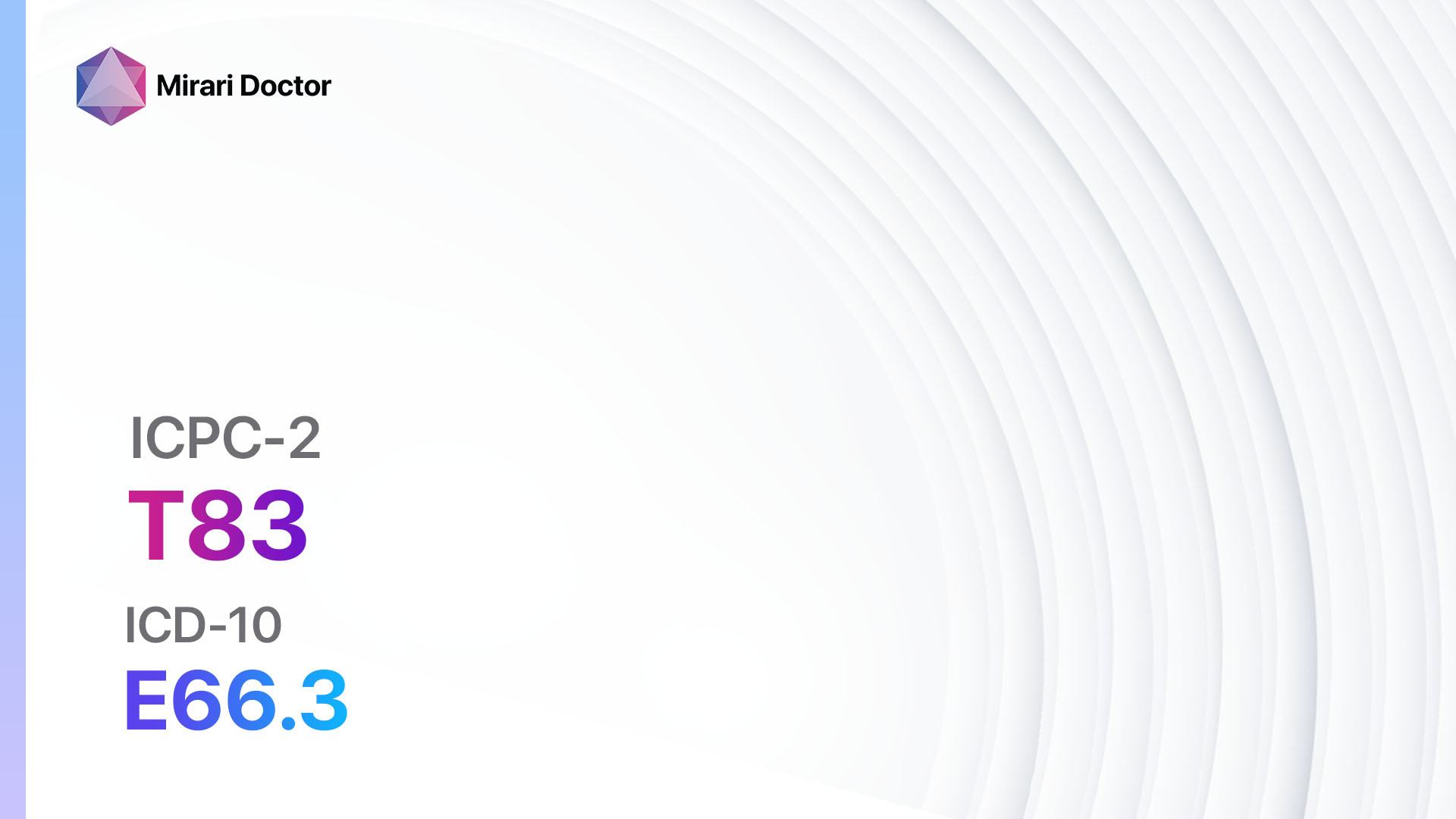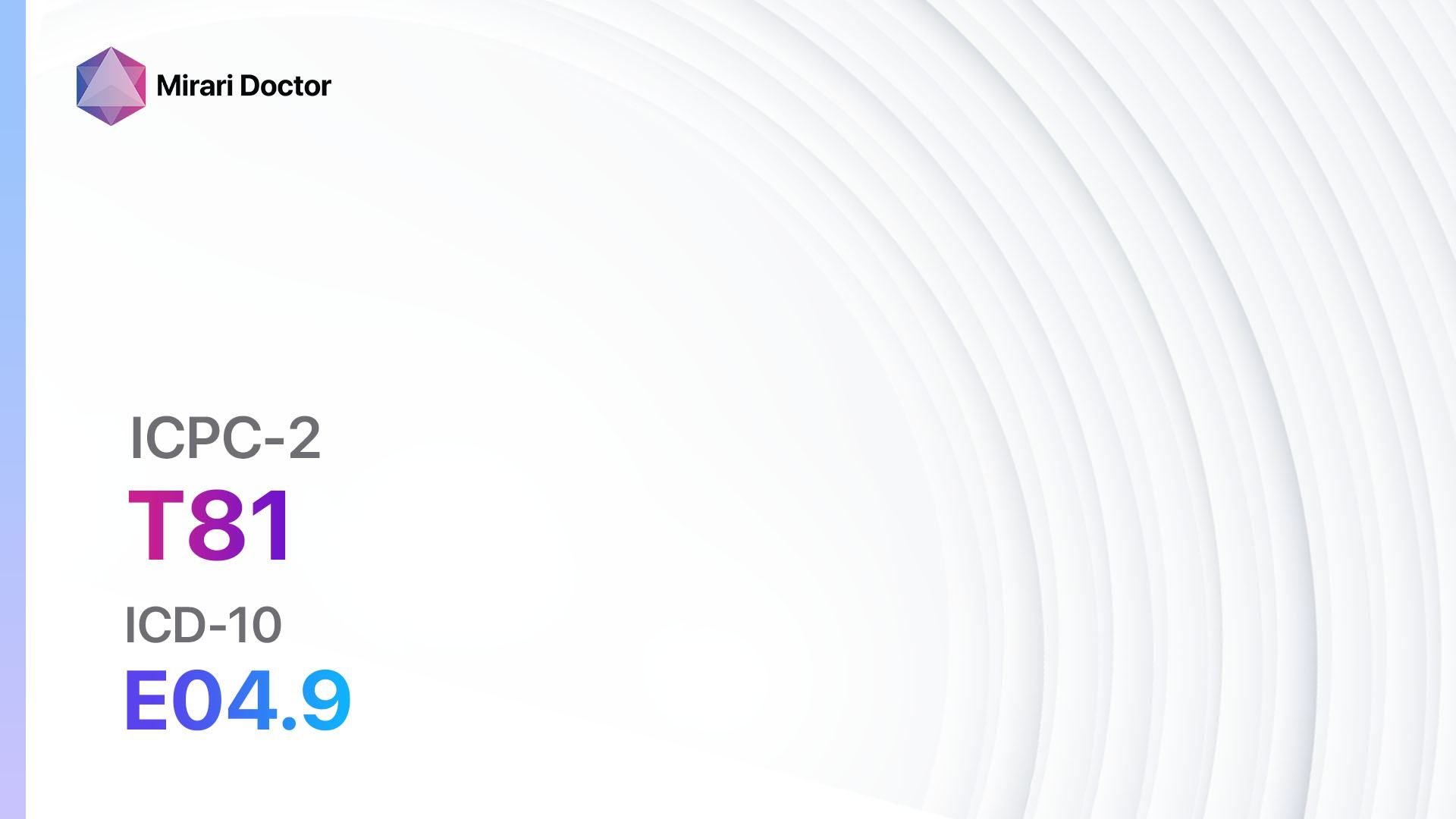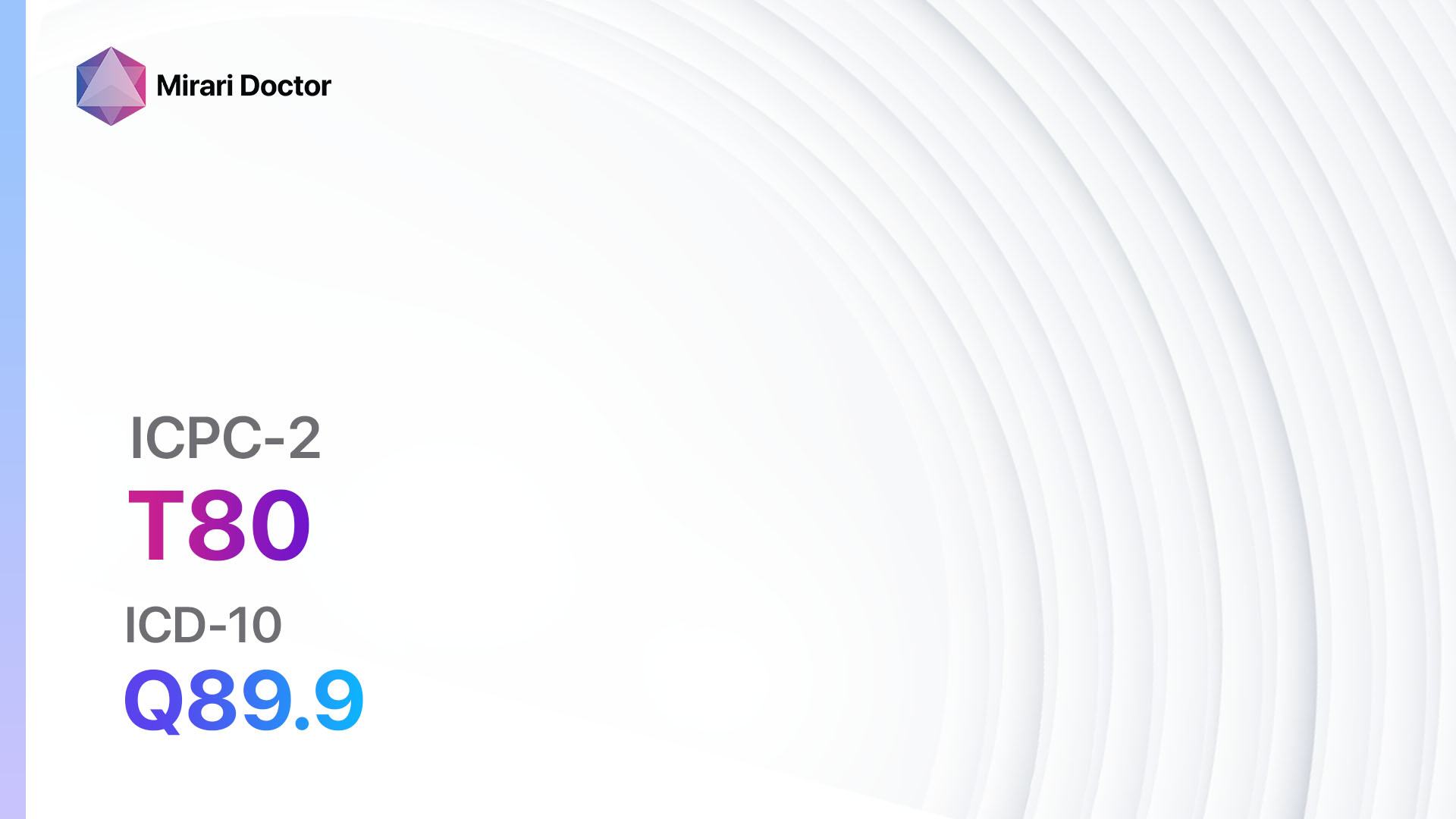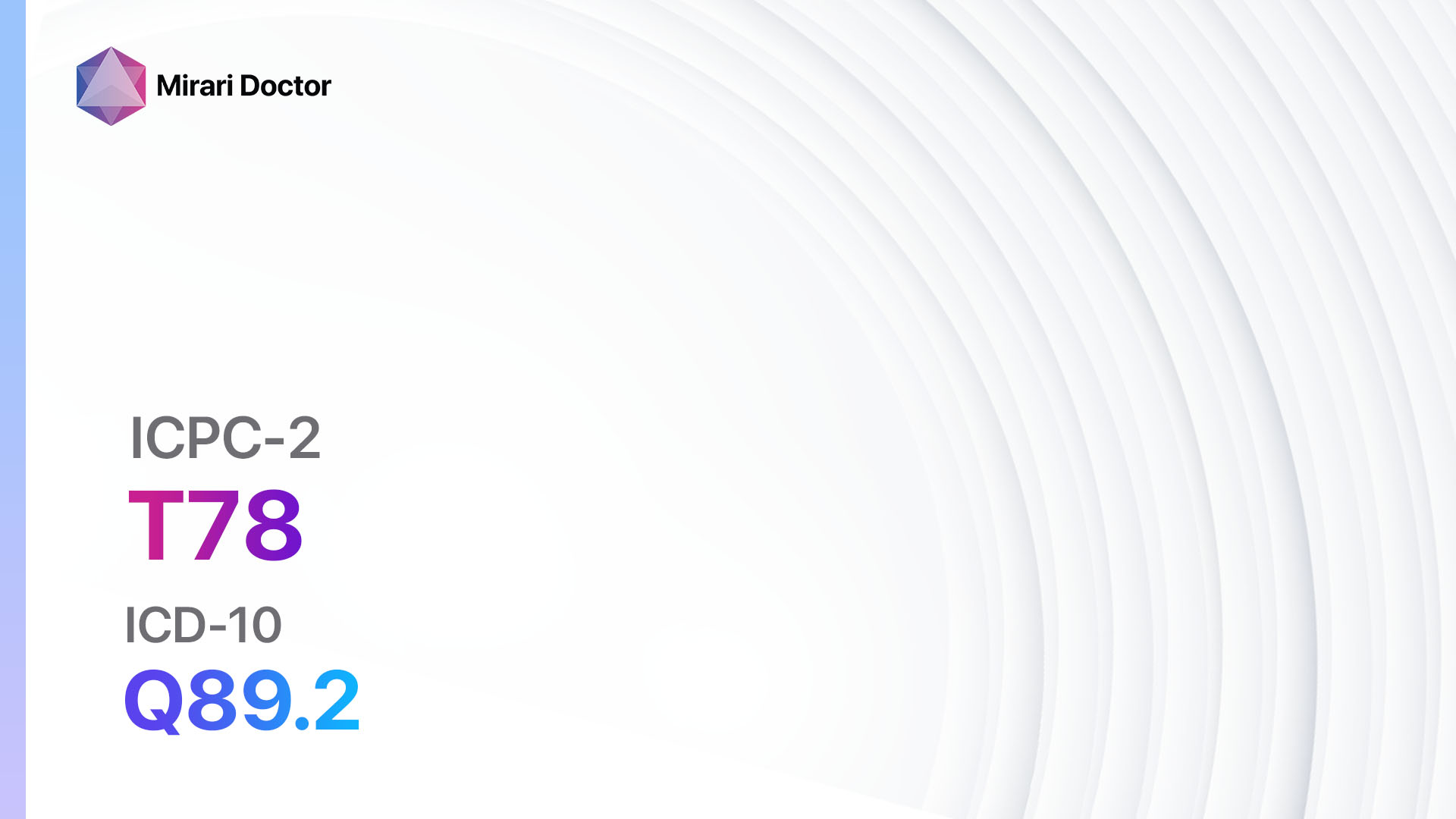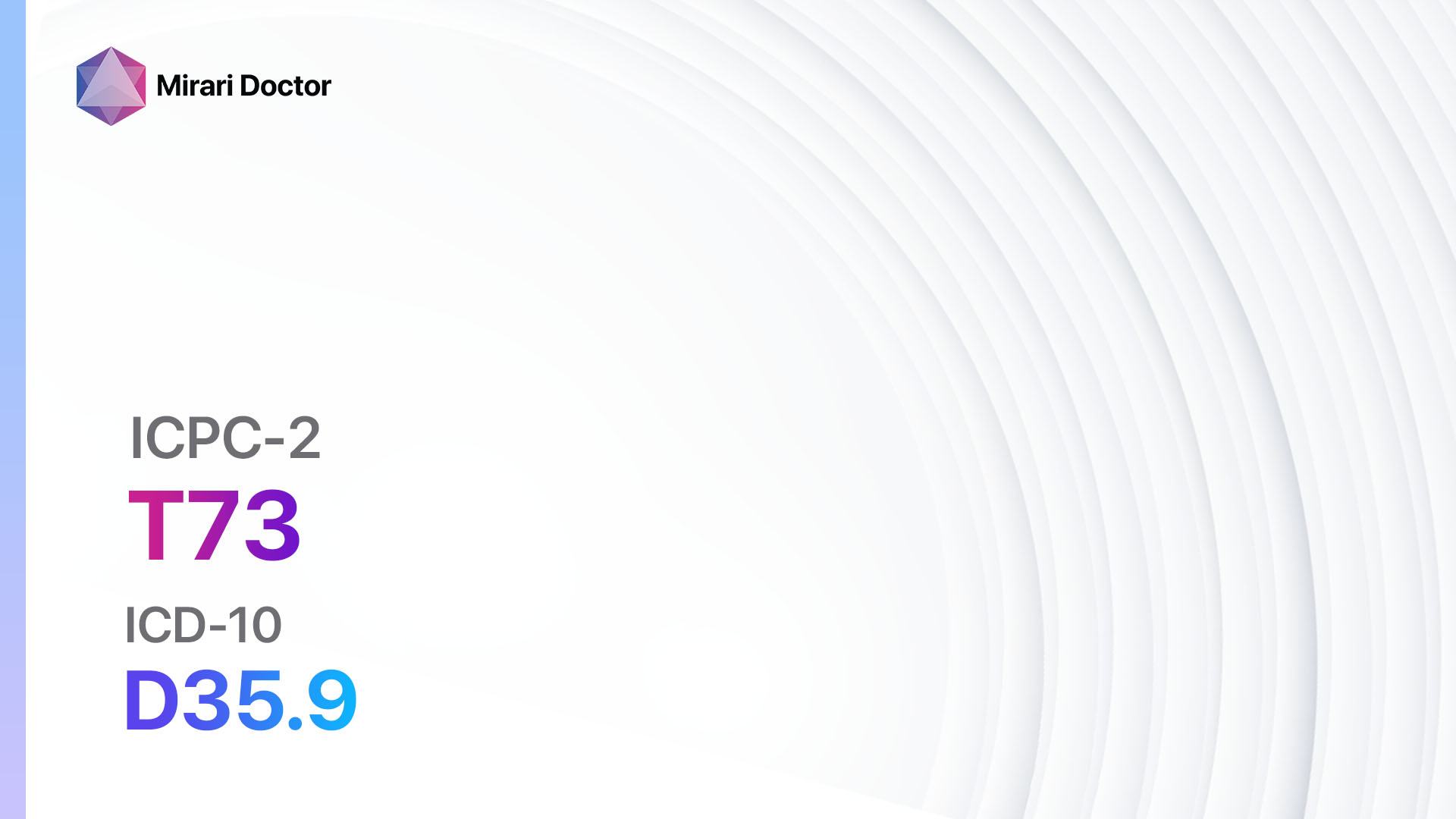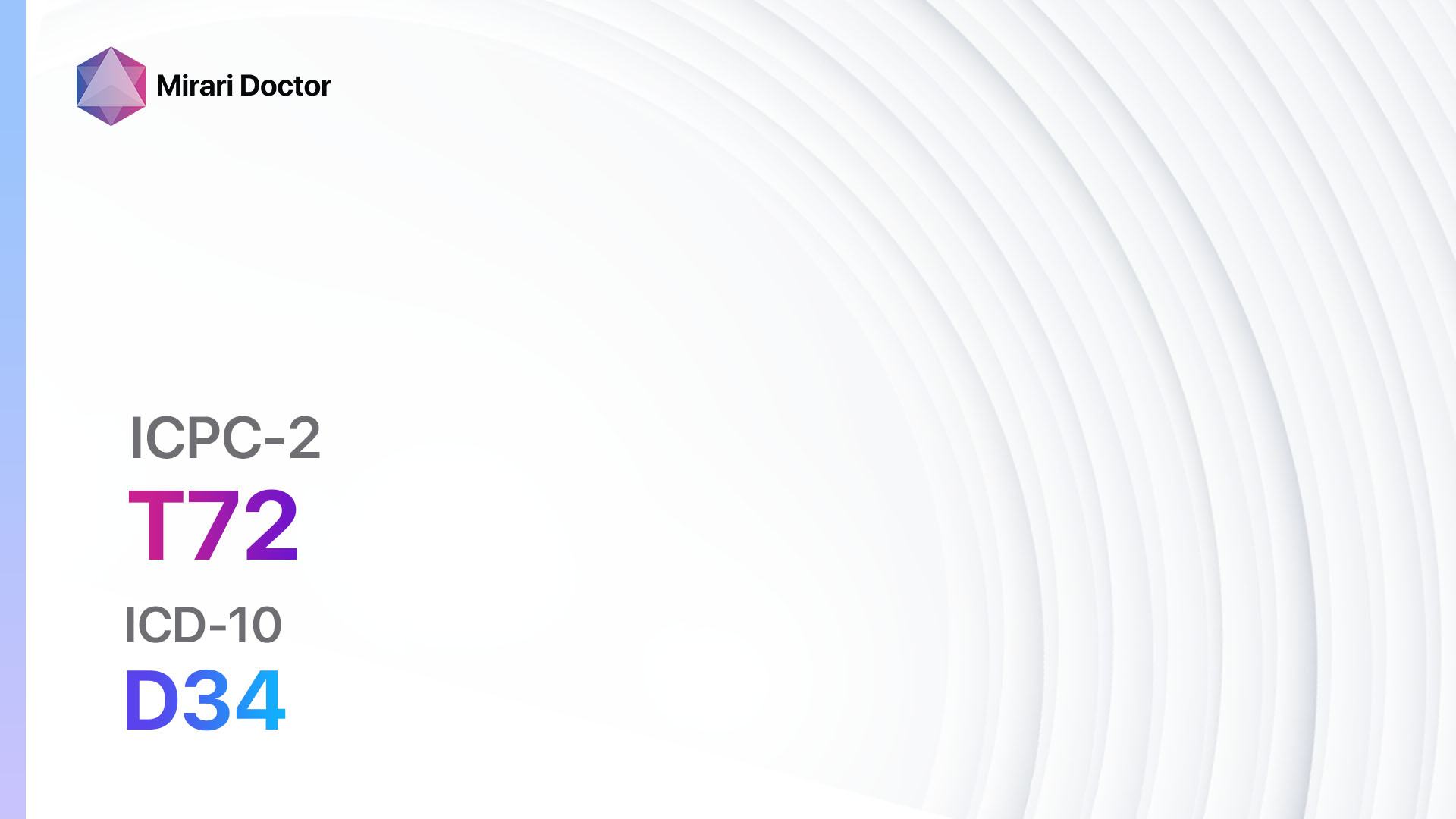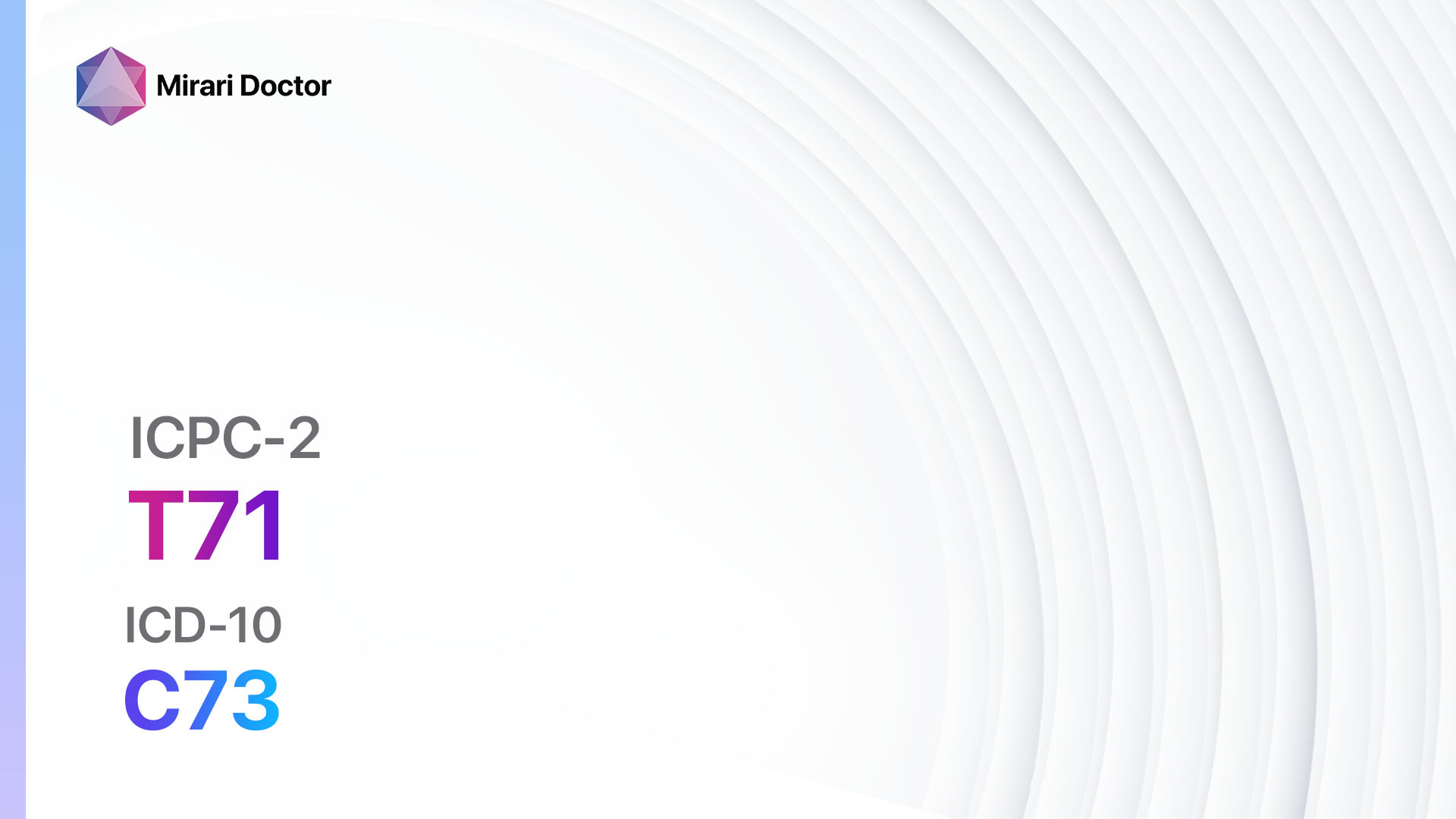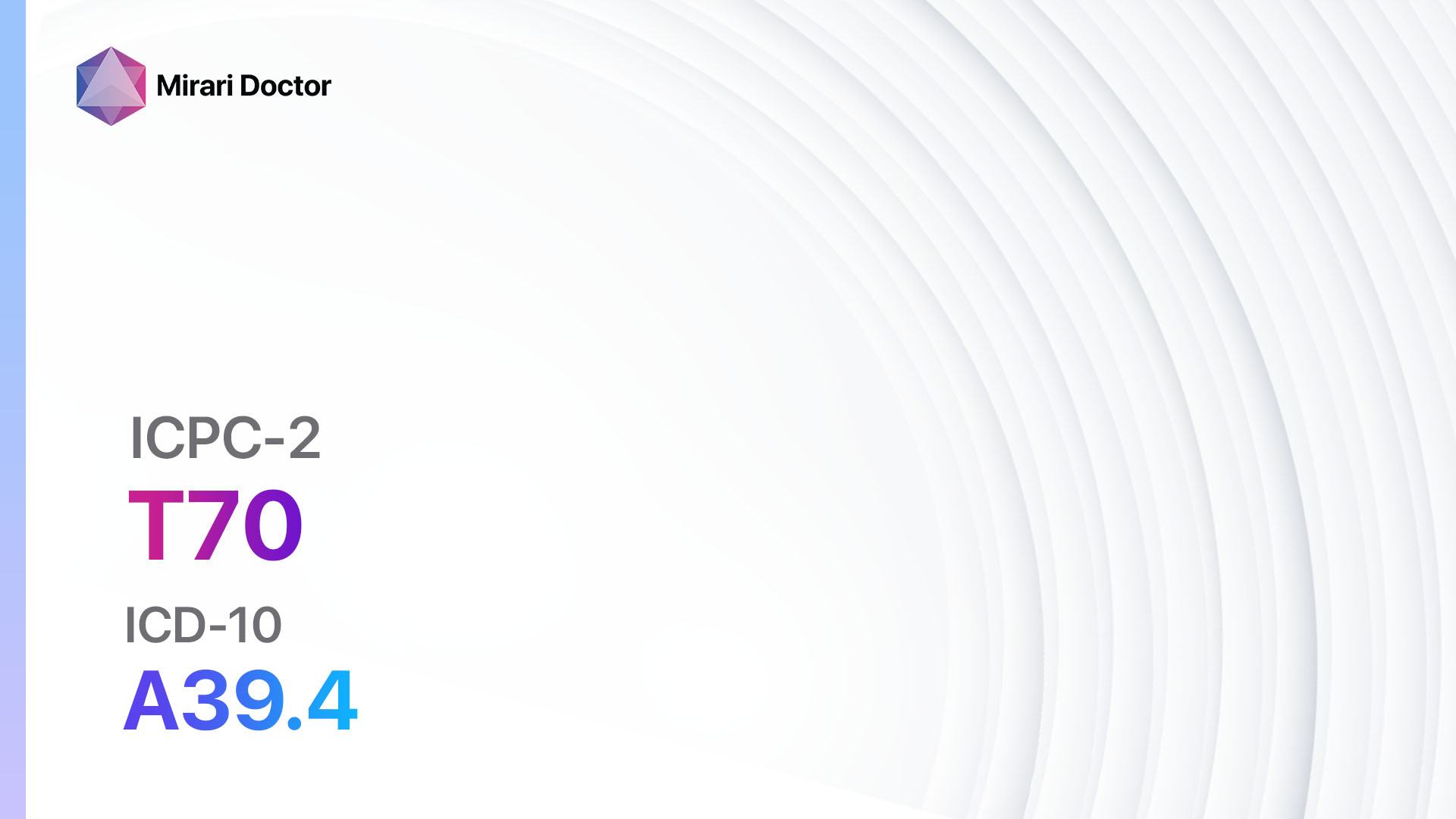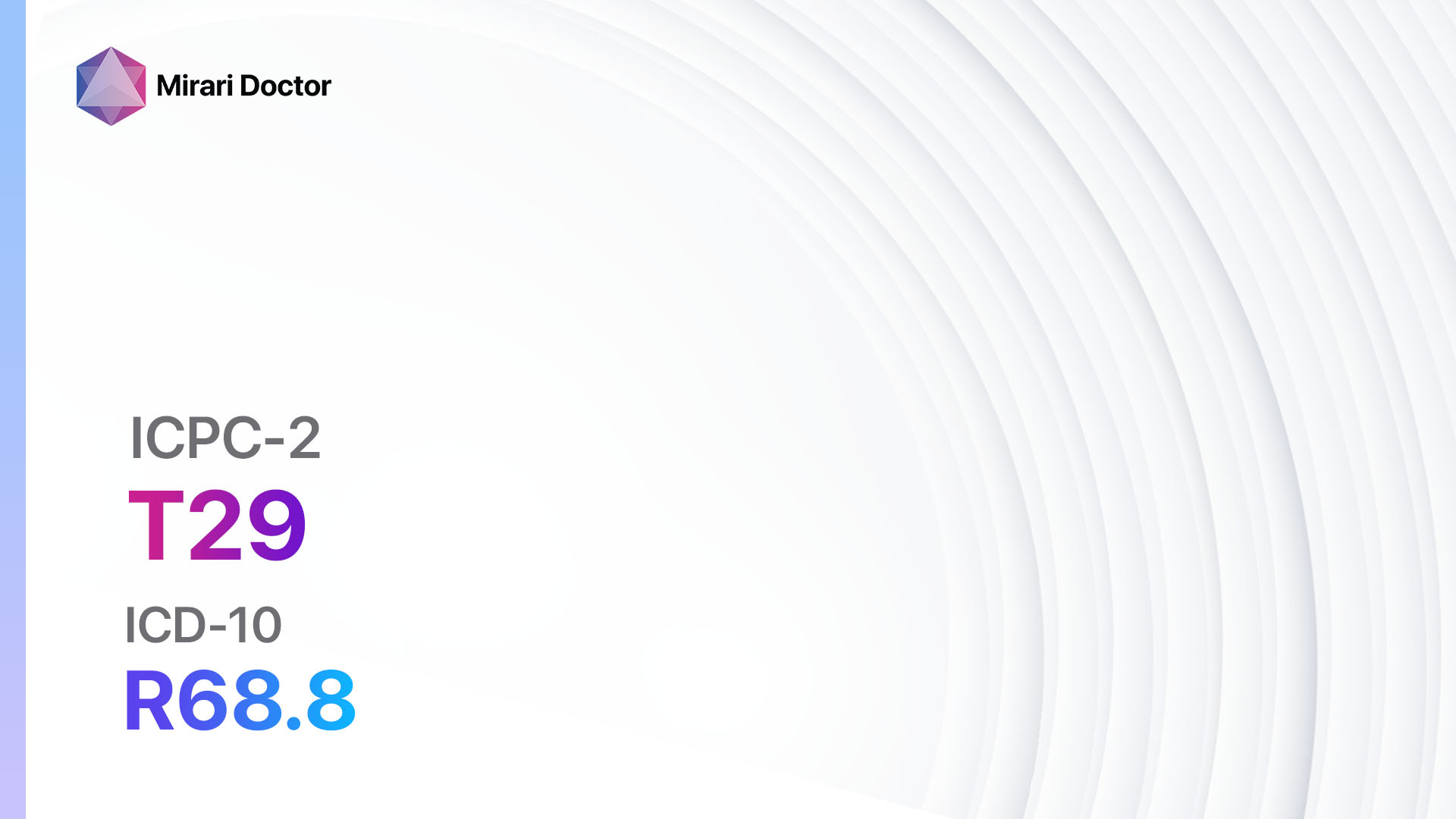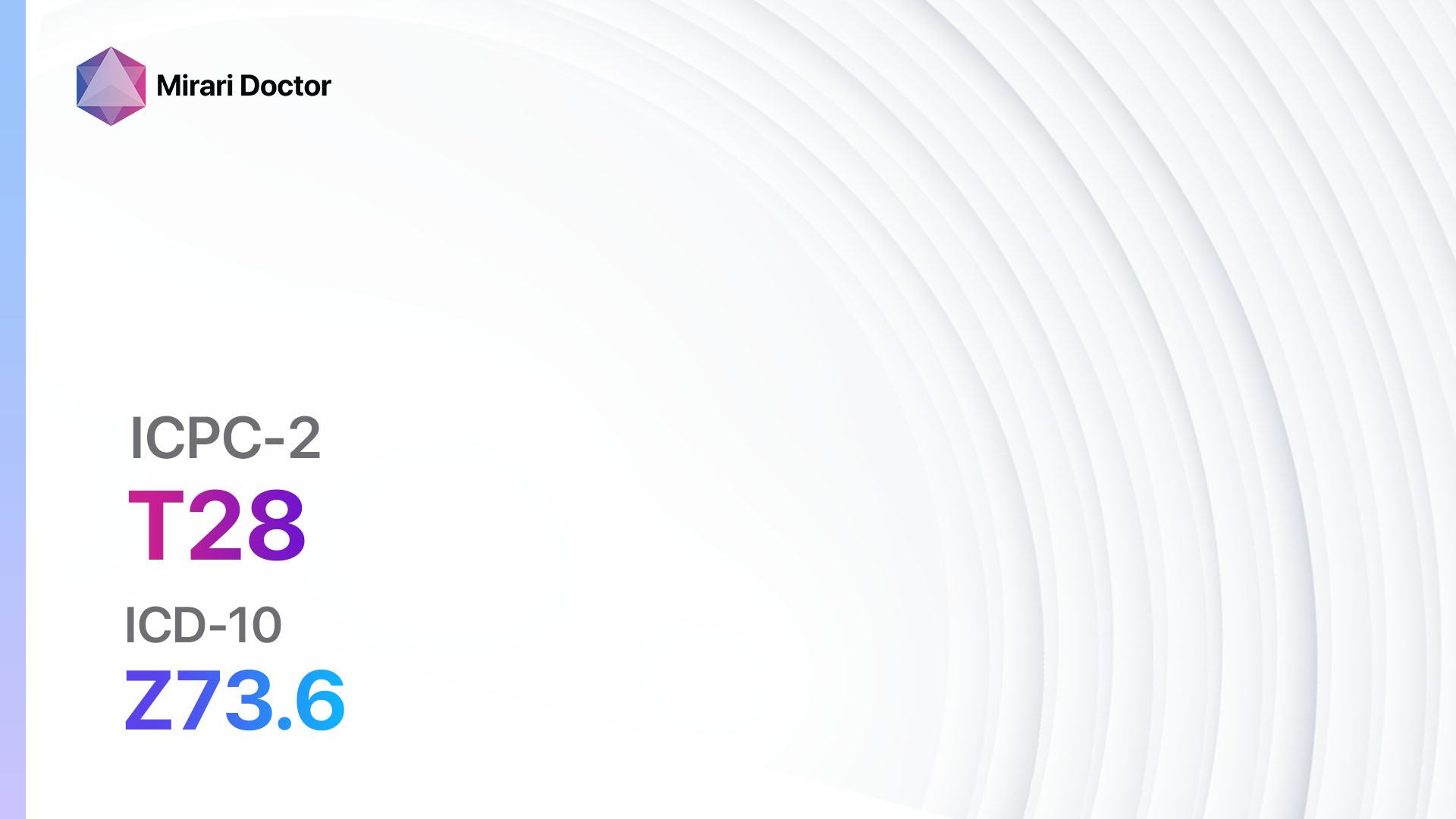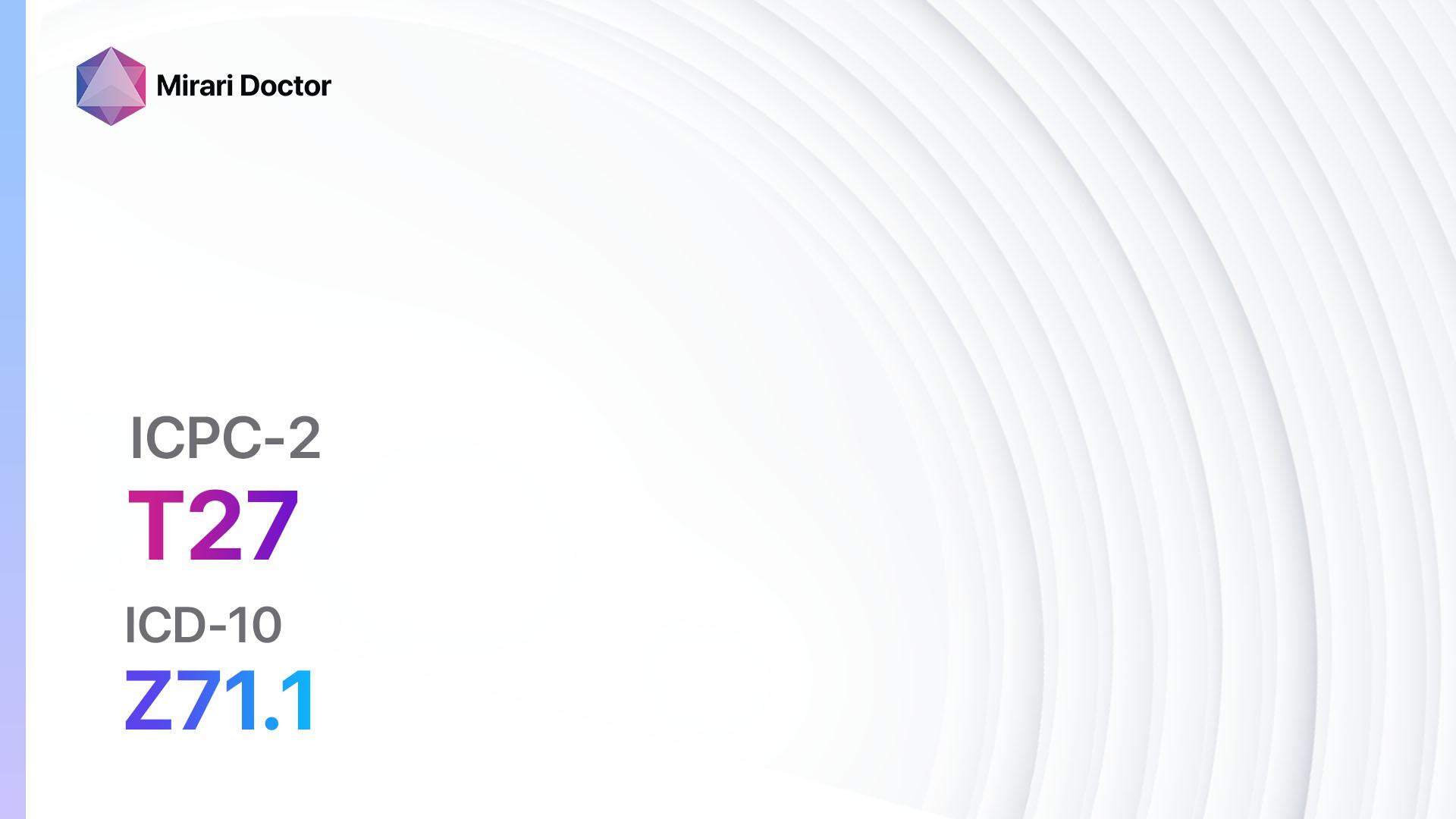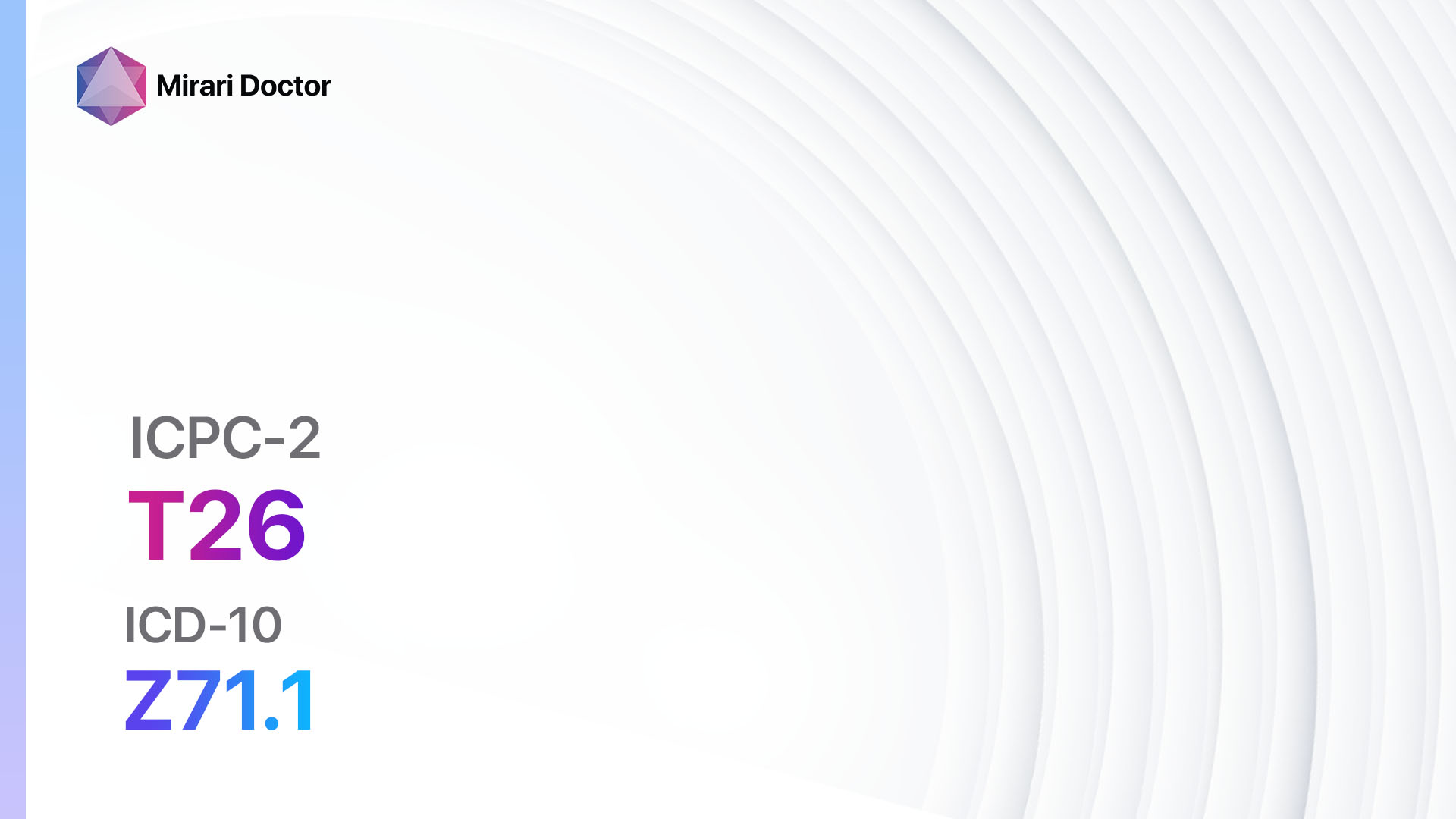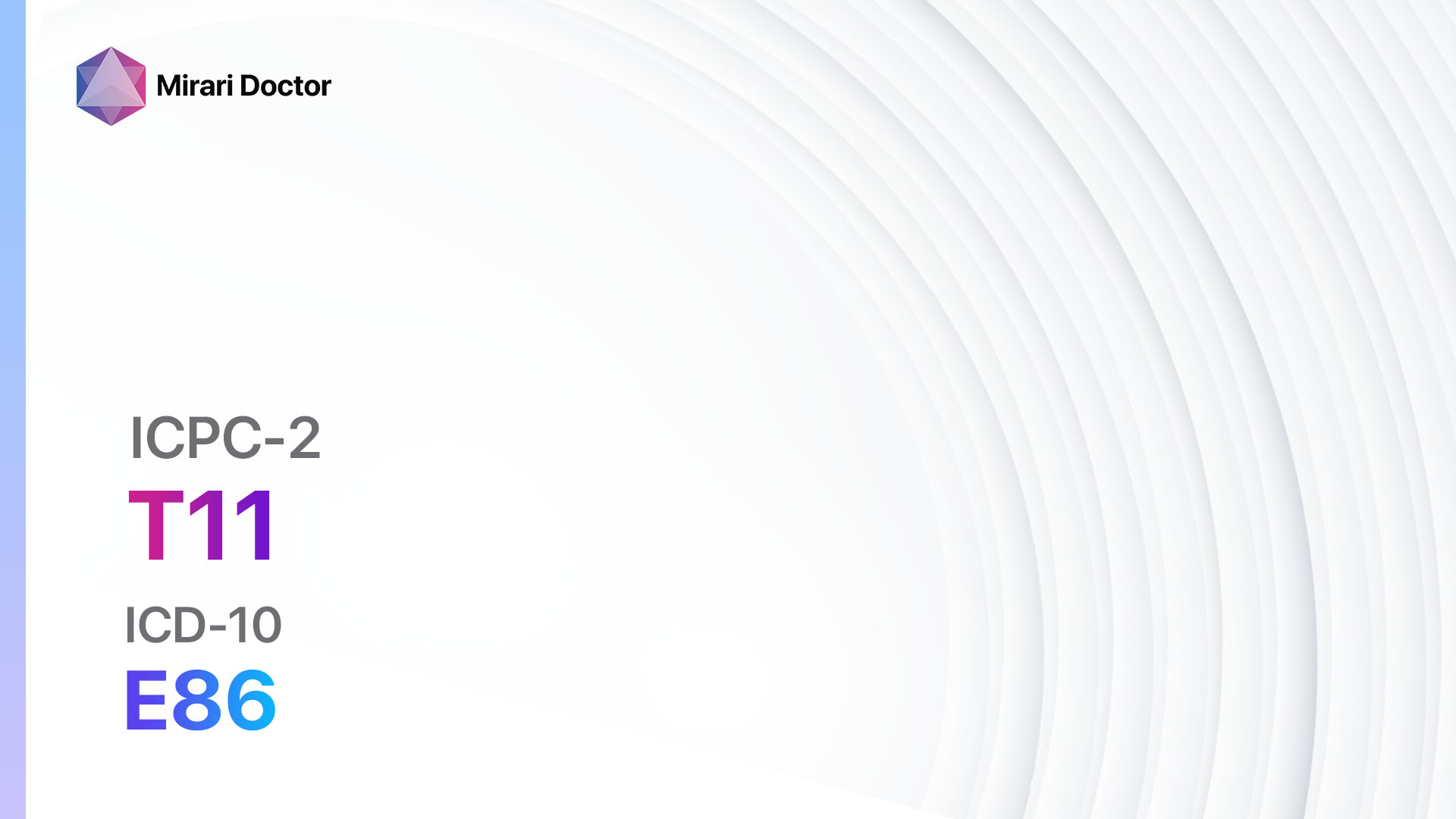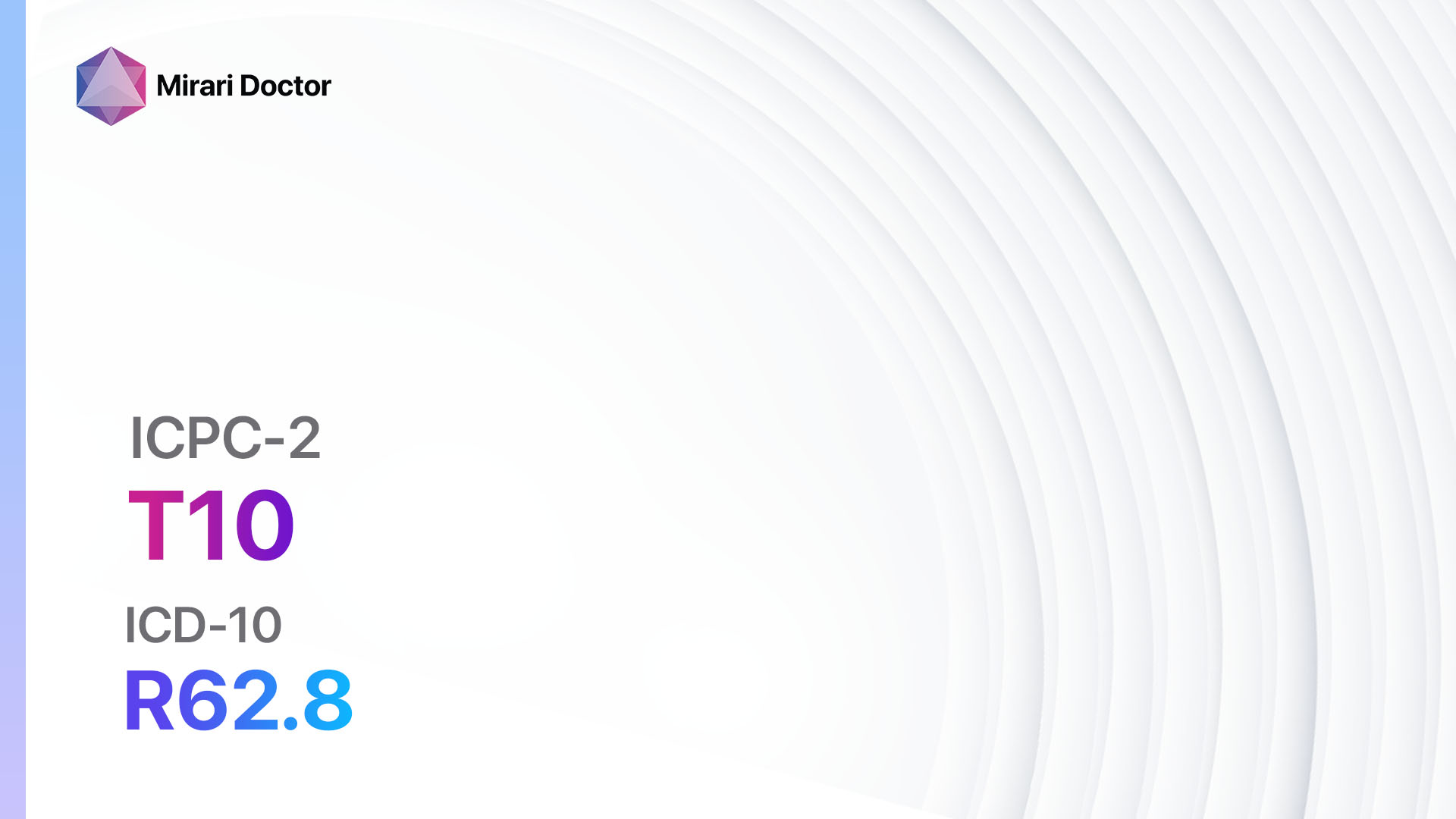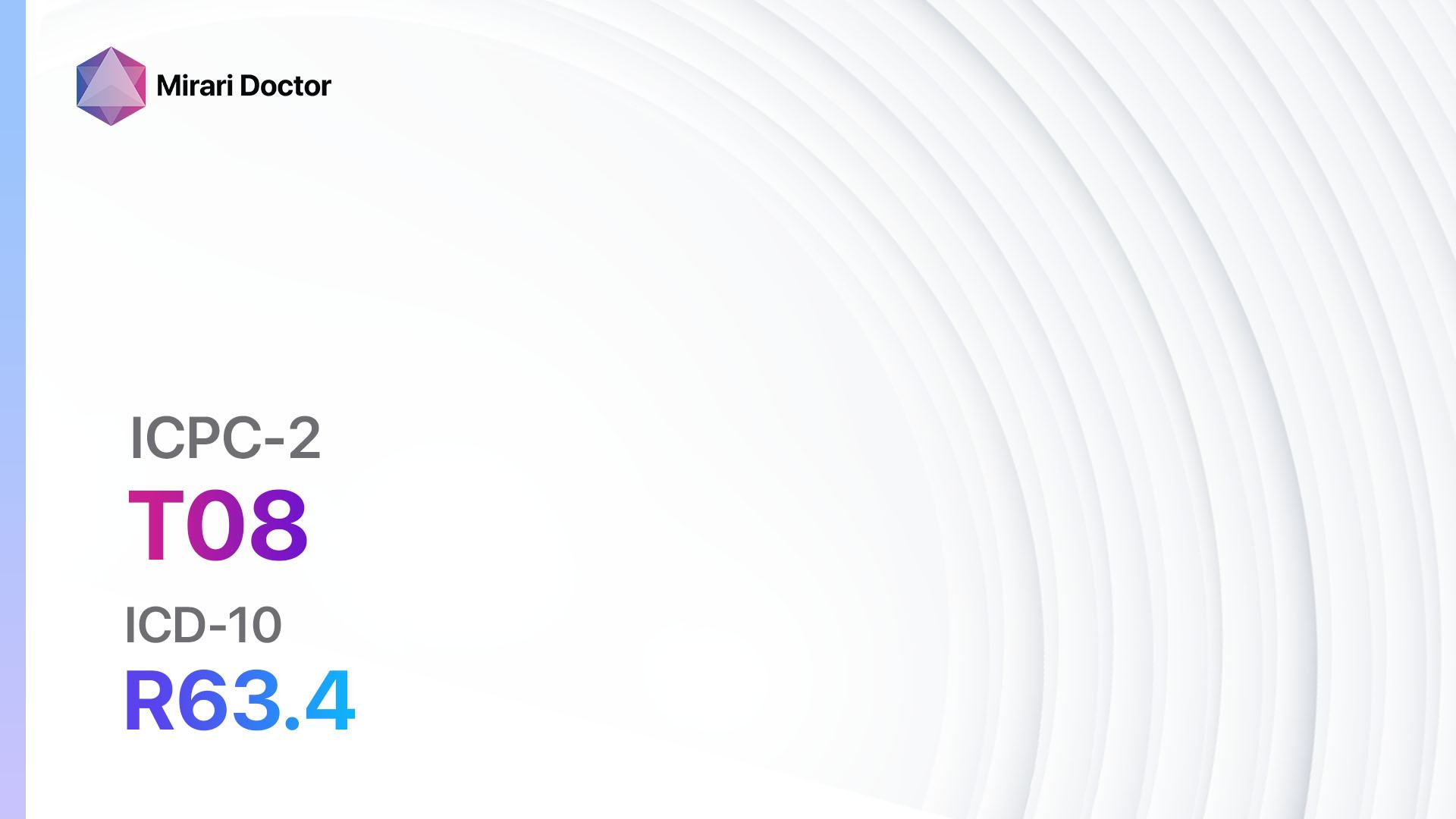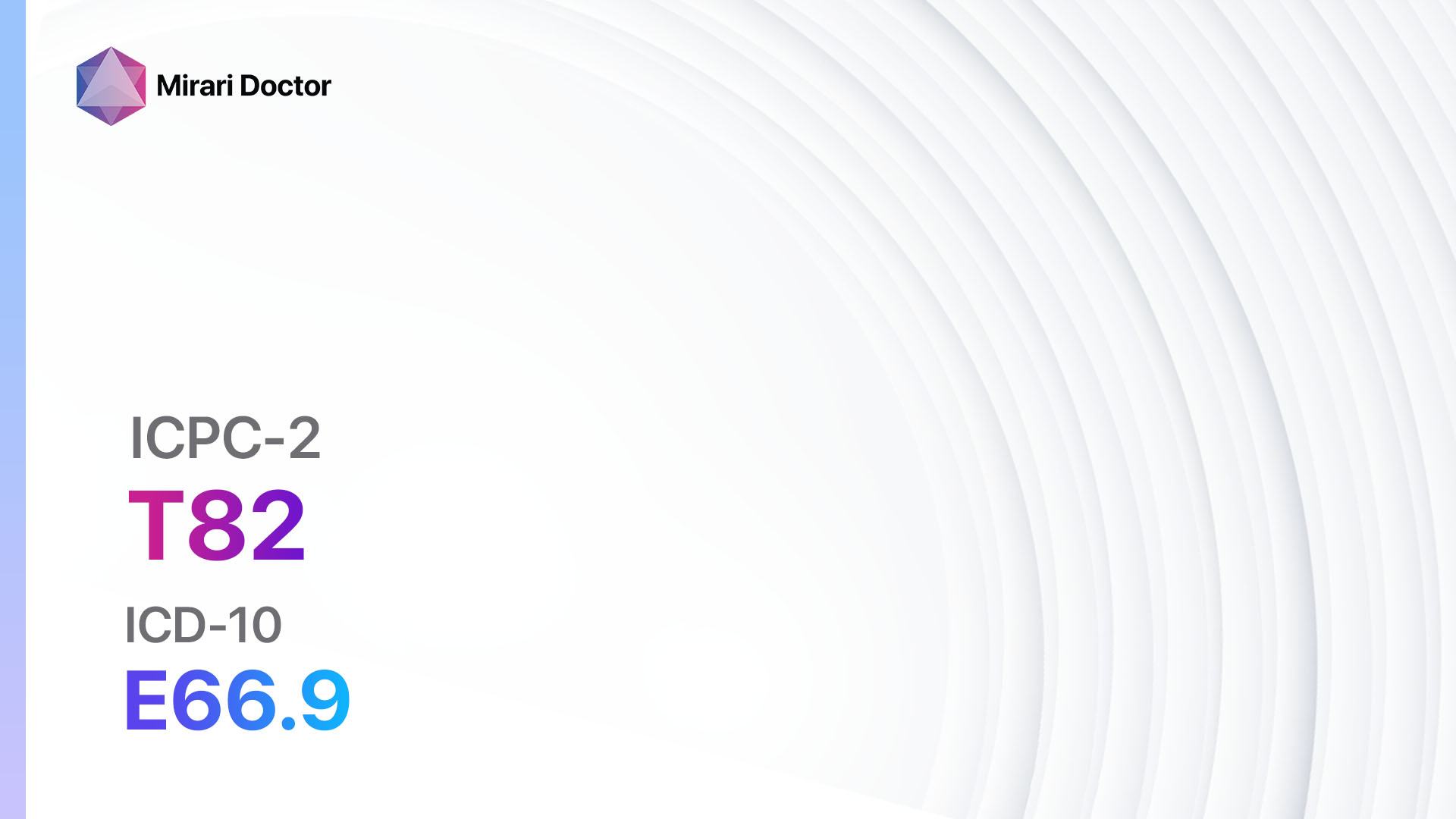
Introduction
Obesity is a chronic condition characterized by excessive accumulation of body fat, leading to negative health outcomes. It is a significant public health concern worldwide, with increasing prevalence rates[1]. The aim of this guide is to provide healthcare professionals with a comprehensive overview of the diagnosis and management of obesity.
Codes
- ICPC-2 Code: T82 Obesity
- ICD-10 Code: E66.9 Obesity, unspecified
Symptoms
- Increased body weight: Patients with obesity typically have a body mass index (BMI) of 30 or higher[2].
- Excessive fat accumulation: Fat deposits are commonly observed in the abdominal area, hips, and thighs[3].
- Breathlessness: Difficulty in breathing, especially during physical activity. Fatigue: Feeling tired and lacking energy.
- Joint pain: Experiencing pain and discomfort in the joints, particularly the knees and hips[4].
- Sleep disturbances: Obstructive sleep apnea and snoring are common in individuals with obesity[5].
- Psychological symptoms: Depression, anxiety, and low self-esteem may be present[6].
Causes
- Poor diet: Consuming a diet high in calories, saturated fats, and sugars contributes to weight gain[7].
- Sedentary lifestyle: Lack of physical activity and prolonged sitting are major risk factors for obesity[8].
- Genetics: Certain genetic factors can predispose individuals to obesity.
- Environmental factors: Access to unhealthy food options, sedentary work environments, and socioeconomic status can influence obesity rates.
- Medical conditions: Certain medical conditions, such as hypothyroidism and polycystic ovary syndrome, can contribute to weight gain.
Diagnostic Steps
Medical History
- Obtain a detailed medical history, including information on weight gain patterns, eating habits, physical activity levels, and any underlying medical conditions.
- Assess family history of obesity and related health conditions.
- Inquire about psychological factors, such as stress, depression, or emotional eating[9].
Physical Examination
- Measure height, weight, and calculate BMI.
- Assess waist circumference to determine central obesity.
- Evaluate blood pressure and heart rate.
- Examine for signs of obesity-related complications, such as acanthosis nigricans (dark, velvety patches of skin) or edema[10].
Laboratory Tests
- Fasting blood glucose: To screen for diabetes or prediabetes.
- Lipid profile: Assess levels of total cholesterol, LDL cholesterol, HDL cholesterol, and triglycerides.
- Liver function tests: Evaluate liver health, as obesity can lead to non-alcoholic fatty liver disease.
- Thyroid function tests: Rule out hypothyroidism as a cause of weight gain.
- Hormonal evaluation: Consider testing for conditions such as polycystic ovary syndrome.
Diagnostic Imaging
- Dual-energy X-ray absorptiometry (DXA): Measures body composition, including fat mass and lean mass.
- Abdominal ultrasound: Assess for fatty liver disease and other obesity-related complications.
- Sleep study: If obstructive sleep apnea is suspected.
Other Tests
- Psychological assessment: Evaluate for underlying mental health conditions, such as depression or binge eating disorder.
- Nutritional assessment: Assess dietary habits and identify areas for improvement.
- Physical activity assessment: Determine current activity levels and provide recommendations for increasing physical activity.
Follow-up and Patient Education
- Schedule regular follow-up visits to monitor progress and provide ongoing support.
- Educate patients about the importance of a healthy diet, regular physical activity, and behavior modification.
- Provide resources for support groups, counseling, or weight management programs.
Possible Interventions
Traditional Interventions
Medications:
Top 5 drugs for Obesity:
- Orlistat (brand name Xenical):
- Cost: $50-$200/month.
- Contraindications: Chronic malabsorption syndrome, cholestasis.
- Side effects: Gastrointestinal disturbances (oily stools, flatulence, abdominal pain).
- Severe side effects: Rare cases of severe liver injury.
- Drug interactions: Cyclosporine, levothyroxine, anticoagulants.
- Warning: Fat-soluble vitamin supplementation may be necessary.
- Liraglutide (brand name Saxenda):
- Cost: $1,000-$1,500/month.
- Contraindications: Personal or family history of medullary thyroid carcinoma, multiple endocrine neoplasia syndrome type 2.
- Side effects: Nausea, vomiting, diarrhea.
- Severe side effects: Pancreatitis, gallbladder disease.
- Drug interactions: Insulin, sulfonylureas.
- Warning: Monitor for signs of pancreatitis or thyroid tumors.
- Phentermine/Topiramate (brand name Qsymia):
- Cost: $100-$200/month.
- Contraindications: Hyperthyroidism, glaucoma, history of cardiovascular disease.
- Side effects: Dry mouth, constipation, insomnia.
- Severe side effects: Increased heart rate, suicidal thoughts.
- Drug interactions: MAO inhibitors, selective serotonin reuptake inhibitors.
- Warning: Risk of birth defects, pregnancy must be avoided.
- Bupropion/Naltrexone (brand name Contrave):
- Cost: $100-$200/month.
- Contraindications: Uncontrolled hypertension, seizure disorder, eating disorders.
- Side effects: Nausea, constipation, headache.
- Severe side effects: Increased blood pressure, suicidal thoughts.
- Drug interactions: MAO inhibitors, opioids.
- Warning: Risk of seizures, monitor blood pressure.
- Lorcaserin (brand name Belviq):
- Cost: $200-$300/month.
- Contraindications: Pregnancy, breastfeeding, history of serotonin syndrome.
- Side effects: Headache, dizziness, fatigue.
- Severe side effects: Valvular heart disease, psychiatric disorders.
- Drug interactions: Serotonergic drugs, monoamine oxidase inhibitors.
- Warning: Discontinue if no weight loss after 12 weeks.
Alternative Drugs:
- Metformin: May be used off-label for weight management in patients with prediabetes or insulin resistance.
- Bupropion: An antidepressant that can also aid in weight loss.
- SGLT2 inhibitors: Medications used for diabetes management that have shown weight loss benefits.
- GLP-1 receptor agonists: Medications used for diabetes management that can also promote weight loss.
- Phentermine: A short-term appetite suppressant that can be used in combination with lifestyle modifications.
Surgical Procedures:
- Bariatric surgery: Various surgical procedures, such as gastric bypass or sleeve gastrectomy, can be considered for patients with severe obesity who have failed conservative measures.
- Cost: $20,000-$35,000.
Alternative Interventions
- Acupuncture: May help reduce appetite and promote relaxation.
- Cost: $60-$120 per session.
- Hypnotherapy: Uses hypnosis techniques to modify eating behaviors and promote weight loss.
- Cost: $75-$150 per session.
- Mindfulness-based interventions: Techniques such as mindful eating can help individuals develop a healthier relationship with food.
- Cost: Varies depending on the program or therapist.
- Herbal supplements: Some herbal supplements, such as green tea extract or Garcinia cambogia, are marketed for weight loss.
- Cost: Varies depending on the specific supplement.
Lifestyle Interventions
- Dietary modifications: Encourage a balanced diet with reduced calorie intake and increased consumption of fruits, vegetables, whole grains, and lean proteins.
- Cost: Varies depending on individual food choices.
- Physical activity: Recommend at least 150 minutes of moderate-intensity aerobic activity per week, along with strength training exercises.
- Cost: Varies depending on gym memberships, equipment, or personal trainers.
- Behavioral therapy: Help patients identify triggers for overeating and develop strategies for behavior change.
- Cost: $75-$150 per session.
- Weight management programs: Offer comprehensive support through a combination of dietary counseling, exercise guidance, and behavioral therapy.
- Cost: Varies depending on the program and duration of participation.
It is important to note that the cost ranges provided are approximate and may vary depending on the location and availability of the interventions. It is recommended to consult with healthcare professionals for personalized treatment options and cost estimates.
Mirari Cold Plasma Alternative Intervention
Understanding Mirari Cold Plasma
- Safe and Non-Invasive Treatment: Mirari Cold Plasma is a safe and non-invasive treatment option for various skin conditions. It does not require incisions, minimizing the risk of scarring, bleeding, or tissue damage.
- Efficient Extraction of Foreign Bodies: Mirari Cold Plasma facilitates the removal of foreign bodies from the skin by degrading and dissociating organic matter, allowing easier access and extraction.
- Pain Reduction and Comfort: Mirari Cold Plasma has a local analgesic effect, providing pain relief during the treatment, making it more comfortable for the patient.
- Reduced Risk of Infection: Mirari Cold Plasma has antimicrobial properties, effectively killing bacteria and reducing the risk of infection.
- Accelerated Healing and Minimal Scarring: Mirari Cold Plasma stimulates wound healing and tissue regeneration, reducing healing time and minimizing the formation of scars.
Mirari Cold Plasma Prescription
Video instructions for using Mirari Cold Plasma Device – T82 Obesity (ICD-10:E66.9)
| Mild | Moderate | Severe |
| Mode setting: 4 (Diabetes Therapy) Location: 4 (Heart, Bile & Pancreas) Morning: 15 minutes, Evening: 15 minutes |
Mode setting: 4 (Diabetes Therapy) Location: 4 (Heart, Bile & Pancreas) Morning: 30 minutes, Lunch: 30 minutes, Evening: 30 minutes |
Mode setting: 4 (Diabetes Therapy) Location: 4 (Heart, Bile & Pancreas) Morning: 30 minutes, Lunch: 30 minutes, Evening: 30 minutes |
| Mode setting: 2 (Wound Healing) Location: 6 (Throat, Lymphatic & Thyroid) Morning: 15 minutes, Evening: 15 minutes |
Mode setting: 2 (Wound Healing) Location: 6 (Throat, Lymphatic & Thyroid) Morning: 30 minutes, Lunch: 30 minutes, Evening: 30 minutes |
Mode setting: 2 (Wound Healing) Location: 6 (Throat, Lymphatic & Thyroid) Morning: 30 minutes, Lunch: 30 minutes, Evening: 30 minutes |
| Mode setting: 3 (Antiviral Therapy) Location: 6 (Throat, Lymphatic & Thyroid) Morning: 15 minutes, Evening: 15 minutes |
Mode setting: 3 (Antiviral Therapy) Location: 6 (Throat, Lymphatic & Thyroid) Morning: 30 minutes, Lunch: 30 minutes, Evening: 30 minutes |
Mode setting: 3 (Antiviral Therapy) Location: 6 (Throat, Lymphatic & Thyroid) Morning: 30 minutes, Lunch: 30 minutes, Evening: 30 minutes |
| Total Morning: 45 minutes approx. $7.50 USD, Evening: 45 minutes approx. $7.50 USD |
Total Morning: 90 minutes approx. $15 USD, Lunch: 90 minutes approx. $15 USD, Evening: 90 minutes approx. $15 USD |
Total Morning: 90 minutes approx. $15 USD, Lunch: 90 minutes approx. $15 USD, Evening: 90 minutes approx. $15 USD |
| Usual treatment for 7-60 days approx. $105 USD – $900 USD | Usual treatment for 6-8 weeks approx. $1,890 USD – $2,520 USD |
Usual treatment for 3-6 months approx. $4,050 USD – $8,100 USD
|
 |
|
Use the Mirari Cold Plasma device to treat Obesity effectively.
WARNING: MIRARI COLD PLASMA IS DESIGNED FOR THE HUMAN BODY WITHOUT ANY ARTIFICIAL OR THIRD PARTY PRODUCTS. USE OF OTHER PRODUCTS IN COMBINATION WITH MIRARI COLD PLASMA MAY CAUSE UNPREDICTABLE EFFECTS, HARM OR INJURY. PLEASE CONSULT A MEDICAL PROFESSIONAL BEFORE COMBINING ANY OTHER PRODUCTS WITH USE OF MIRARI.
Step 1: Cleanse the Skin
- Start by cleaning the affected area of the skin with a gentle cleanser or mild soap and water. Gently pat the area dry with a clean towel.
Step 2: Prepare the Mirari Cold Plasma device
- Ensure that the Mirari Cold Plasma device is fully charged or has fresh batteries as per the manufacturer’s instructions. Make sure the device is clean and in good working condition.
- Switch on the Mirari device using the power button or by following the specific instructions provided with the device.
- Some Mirari devices may have adjustable settings for intensity or treatment duration. Follow the manufacturer’s instructions to select the appropriate settings based on your needs and the recommended guidelines.
Step 3: Apply the Device
- Place the Mirari device in direct contact with the affected area of the skin. Gently glide or hold the device over the skin surface, ensuring even coverage of the area experiencing.
- Slowly move the Mirari device in a circular motion or follow a specific pattern as indicated in the user manual. This helps ensure thorough treatment coverage.
Step 4: Monitor and Assess:
- Keep track of your progress and evaluate the effectiveness of the Mirari device in managing your Obesity. If you have any concerns or notice any adverse reactions, consult with your health care professional.
Note
This guide is for informational purposes only and should not replace the advice of a medical professional. Always consult with your healthcare provider or a qualified medical professional for personal advice, diagnosis, or treatment. Do not solely rely on the information presented here for decisions about your health. Use of this information is at your own risk. The authors of this guide, nor any associated entities or platforms, are not responsible for any potential adverse effects or outcomes based on the content.
Mirari Cold Plasma System Disclaimer
- Purpose: The Mirari Cold Plasma System is a Class 2 medical device designed for use by trained healthcare professionals. It is registered for use in Thailand and Vietnam. It is not intended for use outside of these locations.
- Informational Use: The content and information provided with the device are for educational and informational purposes only. They are not a substitute for professional medical advice or care.
- Variable Outcomes: While the device is approved for specific uses, individual outcomes can differ. We do not assert or guarantee specific medical outcomes.
- Consultation: Prior to utilizing the device or making decisions based on its content, it is essential to consult with a Certified Mirari Tele-Therapist and your medical healthcare provider regarding specific protocols.
- Liability: By using this device, users are acknowledging and accepting all potential risks. Neither the manufacturer nor the distributor will be held accountable for any adverse reactions, injuries, or damages stemming from its use.
- Geographical Availability: This device has received approval for designated purposes by the Thai and Vietnam FDA. As of now, outside of Thailand and Vietnam, the Mirari Cold Plasma System is not available for purchase or use.
References
- World Health Organization. (2021). Obesity and overweight. Retrieved from https://www.who.int/news-room/fact-sheets/detail/obesity-and-overweight
- Centers for Disease Control and Prevention. (2021). Defining Adult Overweight & Obesity. Retrieved from https://www.cdc.gov/obesity/adult/defining.html
- Harvard T.H. Chan School of Public Health. (2021). Obesity Prevention Source: Abdominal Obesity. Retrieved from https://www.hsph.harvard.edu/obesity-prevention-source/obesity-definition/abdominal-obesity/
- Anandacoomarasamy, A., Caterson, I., Sambrook, P., Fransen, M., & March, L. (2008). The impact of obesity on the musculoskeletal system. International Journal of Obesity, 32(2), 211-222.
- Romero-Corral, A., Caples, S. M., Lopez-Jimenez, F., & Somers, V. K. (2010). Interactions between obesity and obstructive sleep apnea: implications for treatment. Chest, 137(3), 711-719.
- Luppino, F. S., de Wit, L. M., Bouvy, P. F., Stijnen, T., Cuijpers, P., Penninx, B. W., & Zitman, F. G. (2010). Overweight, obesity, and depression: a systematic review and meta-analysis of longitudinal studies. Archives of General Psychiatry, 67(3), 220-229.
- Mozaffarian, D., Hao, T., Rimm, E. B., Willett, W. C., & Hu, F. B. (2011). Changes in diet and lifestyle and long-term weight gain in women and men. New England Journal of Medicine, 364(25), 2392-2404.
- Herrera, B. M., & Lindgren, C. M. (2010). The genetics of obesity. Current Diabetes Reports, 10(6), 498-505.
- Konttinen, H., Männistö, S., Sarlio-Lähteenkorva, S., Silventoinen, K., & Haukkala, A. (2010). Emotional eating, depressive symptoms and self-reported food consumption. A population-based study. Appetite, 54(3), 473-479.
- Hahler, B. (2002). An overview of dermatological conditions commonly associated with the obese patient. Ostomy/wound Management, 48(5), 52-63.
Related articles
Made in USA


